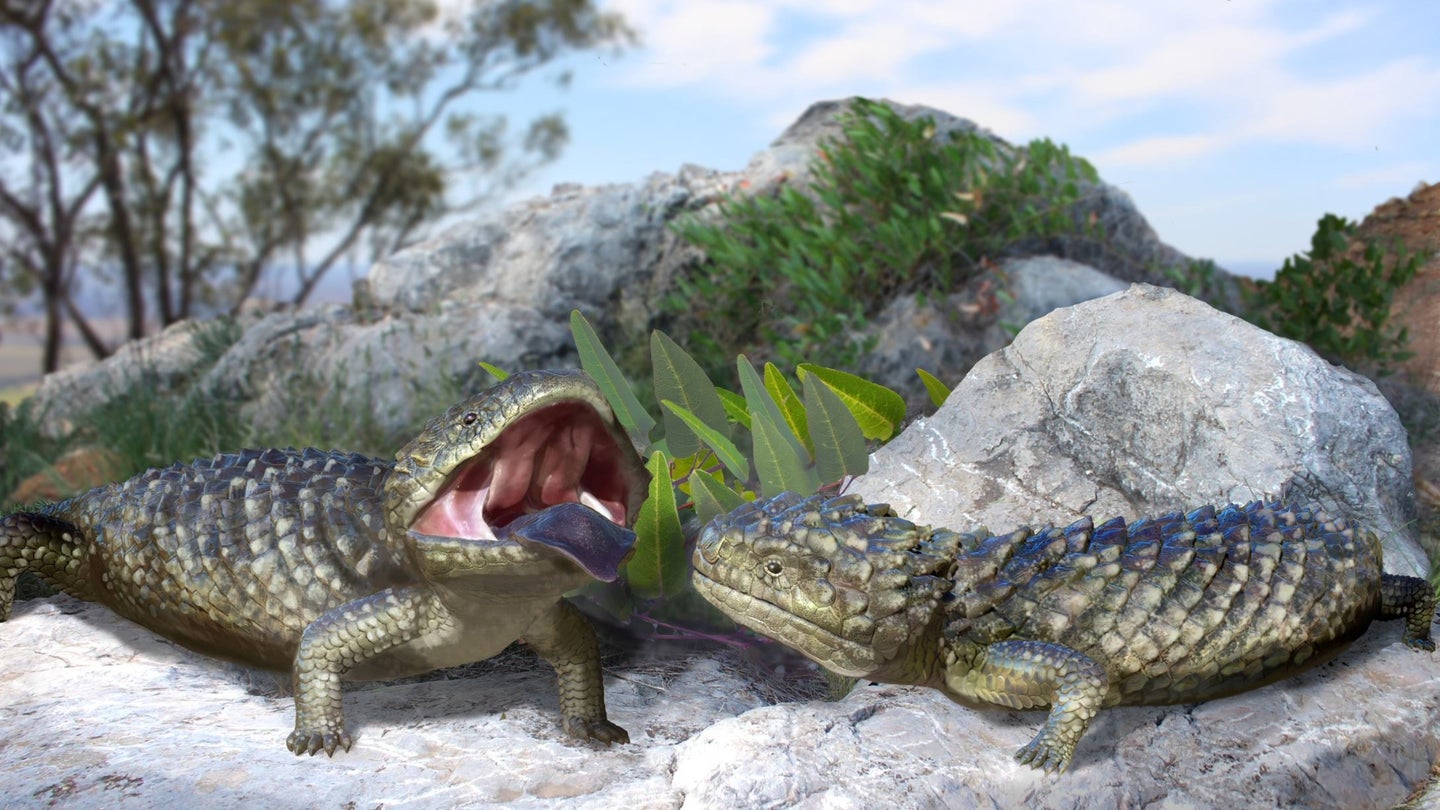
Around 1,500 of the living lizard species on Earth fall into the skink family—a category of small reptiles noted for their unusually short legs and lack of a distinct neck. These chunky little creatures are found pretty much everywhere—the islands of Southeast Asia, deserts of Australia, and temperate zones of North America. But what we know of the paleontological history of these reptiles is limited. While we have a good idea about many prehistoric giant birds and mammals, the early days of the skink are still shrouded in mystery.
Perhaps unsurprisingly, the biggest skink known to history was recently discovered where lots of other giant creatures once roamed—Australia. About a decade ago, scientists uncovered an unusually large lizard-like skull and jaw in the Wellington caves in New South Wales. A new analysis published in Proceedings of the Royal Society B on June 13 unveiled that those two bones, as well as finds from a more recent excavation in the region, belong to an extinct skink species called the Tiliqua frangens.
[Related: The biggest animal ever to fly was a reptile with a giraffe-like neck.]
The new species, lovingly nicknamed by its discoverers as “Mega Chonk” and “Chonkasaurus,” is considerably larger than today’s skink specimens. The average skink comes in at around 4 inches long, weighing less than 0.07 ounces. This newly discovered fella was around 22 inches long, and weighed around 6 pounds—making it around 1,000 times bigger than its modern day counterparts.
“We don’t often find new ‘giants’ in the fossil record, and lizard fossils are especially hard to piece together, so this was particularly exciting,” says Kailah Thorn, study author and paleontologist at the Western Australian Museum. It helps fill in what scientists know about extinct squamates—a group that includes geckos, pythons, and other reptiles with scales.
The fossils from this short-legged, strong-jawed creature were dated back around 47,000 years ago, when the largest-known kangaroos, massive flightless birds, and wombats weighing more than three tons roamed through the outback. Although Tiliqua was petite compared to these massive mammals, it filled an important role: seed dispersal, which was fulfilled on other continents via land tortoises.
[Related: Snakes may not have legs, but they do have two penises.]
“Australia didn’t have terrestrial tortoises filling that body size and diet niche like they do in Africa and the Americas,” says Thorn. “Instead, we have a giant Shingleback!” she says, referring to the lizard’s spiky armored back.
However, similar to their supersized neighbors, the lizards met an unfortunate extinction around 40,000 years ago. Luckily, there’s still a close living relative of the creature in Australia today with many of the same characteristics—only much shrimpier.
The post This chunky ancient lizard was 1,000 times bigger than its modern relatives appeared first on Popular Science.
Articles may contain affiliate links which enable us to share in the revenue of any purchases made.
from | Popular Science https://ift.tt/BKqbfXN



0 Comments